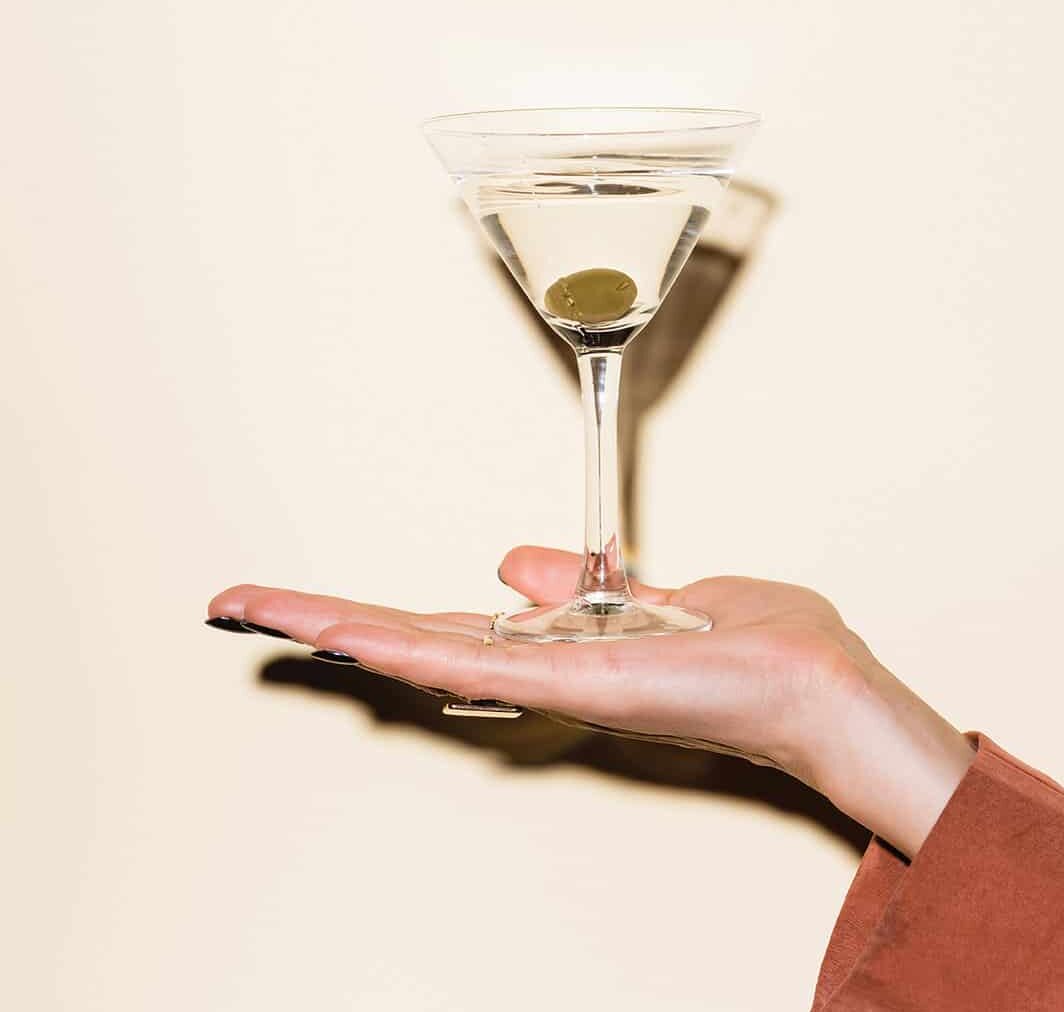
We’re in the midst of a major ginaissance, and these craft varietals came ready to play with cheese
It feels like only yesterday I was in college with a handle of Malibu rum in my dorm room mini fridge, a naked patch of abdomen above my low-rise jeans, and probably some T-Pain on my iPod. I was learning how to drink—and doing it in a very early 2000s way—with craft beer, with vodka Red Bulls. To the extent that gin was on my radar, it was as a thing to be avoided. Most people I knew were just one degree of separation away from a hellish gin story.
Flash forward to 2023. You can now get a Negroni at pretty much any dive, TikTokers are putting gin in their borgs, and the martini emoji is shorthand for first-rate elegance. We are living in the eye of the gin renaissance, a movement fueled by Campari corporate, by midcentury-modern nostalgia, and by a blooming of American craft microdistilling.
How did we get here? Before there was Aviation or Hendricks or even Bombay, there was sixteenth-century Dutch “genever,” made with distilled malt wine infused with botanicals to mask its harsh flavor. This spirit jumped the pond to the UK in the seventeenth century, where the base changed to barley, the name changed to gin, and a so-called Gin Craze broke out, launching the Tanqueray, Bombay, and Gordon’s brands we still drink today. Flavor profiles were chosen with an eye toward wellness, using juniper for indigestion, quinine for malaria, and lime for scurvy (the latter giving us the G&T and the gimlet, respectively). Gin eventually made the journey to the States, too, and thrived during the Prohibition and Don Draper eras, before getting eclipsed by vodka in the latter half of the twentieth century.
Then, in the mid-aughts, something changed. As the craft beer and farm-to-table movements spread like a rash across the country, microdistilleries began cropping up everywhere. In 2003, there were 70; today, there are over 2,300. “A lot of new distilleries really wanted to make whiskey,” says Matt Sweeney, founder of Folsom, California’s New Alchemy Distilling. “But whiskey takes time, [so] some of them made gin.” Sweeney says that was the best thing that could have happened to his distillery: “The freedom… was quite liberating, relative to the dogmatic rules related to whiskey.”
The only rule for gin is that it must contain juniper berries. In a classic London Dry, the base spirit is wheat, while in the States it’s often corn (a fact Sweeney attributes to the grains each country subsidizes). “Wheat spirit tends to enhance the spicy and piney notes, and corn, the sweeter and citrus notes,” he says. Because of this, many call American craft gins “wet” where Londons are “dry.” But if there’s any defining fact of American craft gin, it’s the spirit of regionality and experimentation. In this way, it is not unlike cheese—and, as a result, is very fun to pair with it.
“I think all gins are food friendly,” says Dr. Sonat Birnecker Hart, founder of Chicago’s Koval Distillery. “Very dry gins go so well with salty foods [such as] blue cheeses and baked parmesan crackers. Citrusy gins are fabulous with fish and candied nuts.” According to Birnecker Hart, the most important thing in pairing is mood: “Is it a garden party, a romantic conversation about taking a relationship to the next level, a schmooze with friends? I would build a menu around [that].” But no matter the vibe, she says cheese is always a welcome component—and, these days, so is gin. Read on for some of our favorites (and the cheeses to eat with them).
KOVAL DRY GIN
+ Blue Ledge Farm Fresh Chèvre Pepper
Milk: Pasteurized goat
This clean, balanced gin is the closest to a London Dry here. Juniper, wildflower, and white pepper are in perfect harmony with no one flavor overpowering the others. Pair it with something savory and straightforward, such as this bright, piquant, and downy New England chèvre.
END OF DAYS PORT OF ENTRY GIN
Milk: Pasteurized goat
This gin tastes like a walk in the forest, so we like to enjoy it with something similarly earthy. Its flavors of pine, coriander, and warming spice create a woodsy wonderland beside this cheese from the Allegheny Plateau that’s like a French Valençay with blue mold instead of ash.
VENTURA SPIRITS WILDER GIN
+ Cascadia Creamery Glacier Blue
Milk: Raw cow
This gin leans on beachy sage, yerba santa, and bay laurel to get its uniquely coastal profile. Pair it with the equally western essence of this blue that’s rich with flavors imparted by volcanic soil and glacial water, not to mention the lava tube caves in which it ages.
DU NORD SOCIAL SPIRITS PROMINENCE GIN
+ La Cabezuela Tradicional Semi Curado
Milk: Thermalized goat
Really putting the “berry” in “juniper berry,” this gin is all juicy sweetness. Anise, angelica, ginger, and orange bring it within spitting distance of an Alpine amaro. Balance it with the lively acidity of this cheese, made from the milk of endangered Guadarrama goats.




